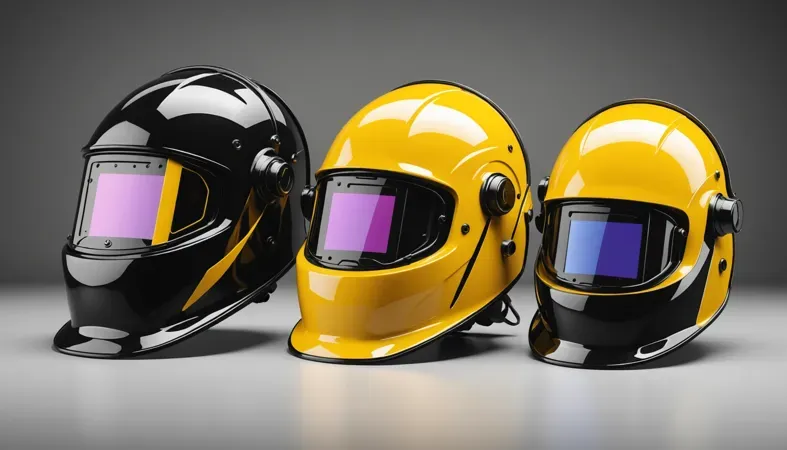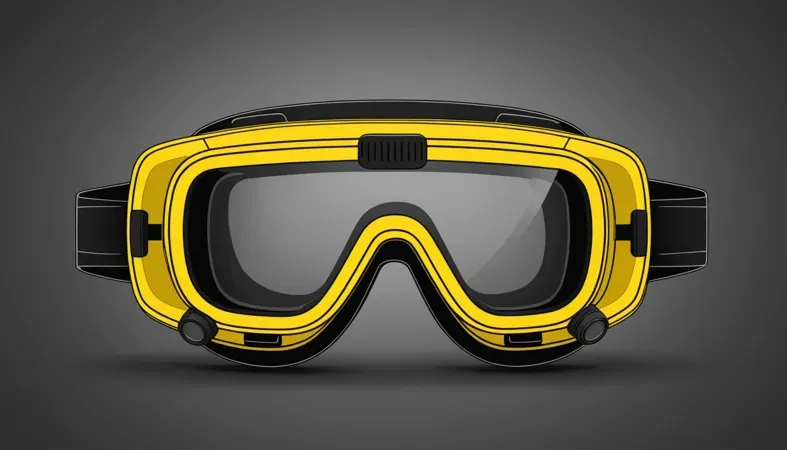How to Adjust Welding Helmet? Tips for Comfort, Safety, and Performance
Published on: April 18, 2025 | Last modified: March 4, 2025
By: Joe Carter
A helmet is a protective gear designed to shield your head from injury. It’s vital in various jobs, especially welding, where sparks and heat are prevalent.
So, how to adjust welding helmet? It’s important to adjust it right for comfort and safety. A poorly fitted helmet could leave you exposed to hazards or make it hard to see while you work. I learned this the hard way when sparks flew into my eyes because my helmet slipped.
In this article, you’ll discover the types of welding helmets, safety tips, steps to adjust your welding helmet, and factors affecting adjustments. We’ll also cover common issues, aftercare, advanced tips, and advantages of proper helmet adjustments. Lastly, we’ll look at applications across various fields and options you can consider to enhance how to use welding helmets.
Contents
- How to Adjust Welding Helmet?
- What is a Welding Helmet?
- Types Of Welding Helmets
- Prerequisites to Keep in Mind
- Steps to Adjust Your Welding Helmet
- Safety Tips
- Types Of Adjustments for Welding Helmets
- Factors Affecting Adjustments
- Advanced Adjustment Techniques for Welding Helmets
- Advanced Sensitivity Settings
- Common Issues
- Advantages Of Proper Helmet Adjustment
- Applications Across Different Fields
- Other Options You Can Consider
- Frequently Asked Questions (FAQs)
- Conclusion
- Additional Reading
How to Adjust Welding Helmet?
A welding helmet protects your eyes from harmful rays. To adjust a welding helmet, loosen the knobs, slide it for comfort, and ensure a snug fit on your head. It’s easy—just takes a minute! Adjustments matter for accurate visibility during MIG or TIG welding.
What is a Welding Helmet?
A welding helmet is protective gear designed to shield your eyes and face during welding helmet. Most helmets have an auto-darkening filter lens that protects against harmful UV and infrared rays, blocking 99.9% of these dangerous emissions. The American National Standards Institute (ANSI) recommends a shade level between 8 and 14, depending on the type of welding, which effectively filters bright light. With auto-darkening helmets, reaction times are typically under 1/25,000 seconds, ensuring quick protection when you start welding.
Adjusting your welding helmet is crucial for comfort and safety. It affects visibility and your ability to see your work. When I started, it took me a few tries to get the fit right; I needed adjustments to avoid straining my neck. I struggled at first, but once I found the right settings, it made all the difference.
I found it helpful for work, especially during long welding projects. A properly adjusted helmet prevents fatigue, making it easier to focus. For instance, when I learned to adjust my helmet, visibility improved greatly; I could see every detail without discomfort. Ensuring your gear fits well creates a smoother experience!
Types Of Welding Helmets
-
Auto-darkening Helmets
These helmets adjust their lens shade automatically when you start welding. To set your auto-darkening helmet, look for a knob or button on the side.
To adjust sensitivity, turn the knob to the desired level based on your environment. Popular models, like the Lincoln Electric VIKING 3350, provide clear instructions for MIG or TIG welds.
-
Passive Helmets
These helmets have a fixed shade that doesn’t change. To wear a passive helmet properly, ensure it fits snugly on your head.
To adjust the fit, use the headgear’s knobs to tighten or loosen the band. A proper seal effectively blocks harmful UV rays.
-
Cutting Helmets
Designed for cutting processes, they protect against sparks and light. To configure a cutting helmet, identify the shade number needed for your plasma cutting job.
Adjust the lens if necessary or ensure the filters meet the ISO 12312 standard to block high-intensity light.
-
Goggle Helmets
These compact helmets are designed for tight spaces. To secure a goggle helmet, first adjust the head strap for a snug fit over your eyes.
To tighten, pull the straps on either side until comfortable. Ensure they fully cover your eyes to prevent flying debris.
-
Heavy-duty Helmets
Built for tough environments, these helmets offer excellent protection. To adjust the headgear, find the adjustment dial on the back.
Twist the dial until it feels secure yet comfortable on your head. These helmets usually come with interchangeable lenses, so check for compatibility.
You should now have a good understanding of welding helmet types, features, and benefits. In the next part, we’ll discuss essential considerations.

Prerequisites to Keep in Mind
What do you need for?
- Auto-Darkening Welding Helmet: You need a reliable auto-darkening welding helmet, like the Lincoln Electric Viking 3350. It provides proper adjustment and sensitivity settings for different welding processes.
- Owner’s Manual: You should have the manufacturer’s manual, such as for a Miller Digital Elite. This helps you understand the helmet adjustments specific to your model.
- Carrying Case: A sturdy carrying case, like the DEWALT DWP181 Lightweight Case, protects your helmet when not in use, keeping it in top shape.
- Comfort-Adjustable Headgear: Consider headgear replacements like the 3M Speedglas. It’s crucial for fit and comfort during long welding sessions.
That covers important prerequisites to keep in mind. Let’s now take a look at the steps to adjust your welding helmet.
Steps to Adjust Your Welding Helmet
Now, we’ll cover the precise steps for adjusting your welding helmet.
-
Determine the Right Fit
Start by placing the helmet on your head to assess the fit. Ensure it rests comfortably above your eyebrows, about 0.5 cm (1/4 Inch) away. Adjust the headgear by turning the knobs at the rear until it’s snug but not tight. A good fit helps reduce neck strain during long welding sessions.
-
Adjust the Lens Position
Next, manipulate the lens frame for the best view. Some helmets have a tilt option. Position the lens to align with your eyes, ideally looking straight at the center of the viewing area. Your eyes should be about 5 cm (2 Inches) from the lens for optimal visibility.
-
Set the Shade Level
Turn the shade control knob to adjust the lens darkness. Most auto-darkening welding helmets have shades ranging from 9 to 13 for different welding types. Start at a shade of 11 for MIG welding, adjusting based on comfort and material thickness. For plasma cutting, try a shade of 10 to protect your eyes while maintaining work visibility.
-
Calibrate the Sensitivity Setting
If you have an auto-darkening helmet, adjust the sensitivity setting. This controls how quickly the lens darkens when it detects an arc. Set it to the highest level initially for clear arc visibility, then dial it back to your comfortable range. Correct sensitivity eliminates premature darkening, providing better work visibility.
-
Test the Adjustments
Finally, take your adjusted helmet for a short test weld. Pay attention to visibility and comfort. If you’re straining to see or it’s too dark, readjust the shade or sensitivity settings. A poorly adjusted helmet can lead to eye fatigue and mistakes! It’s crucial to consider how welding impacts eye health.
You should now have a good understanding of adjusting your welding helmet. In the next part, we’ll discuss safety tips.
Safety Tips
Let’s quickly explore essential precautions for adjusting your welding helmet.
- Use Protective Gloves: Always wear gloves to protect your hands. I recommend leather welding gloves for comfort and durability.
- Secure Helmet Straps: Ensure straps are tight to prevent slips. A properly adjusted helmet can reduce the risk of injury by up to 50%.
- Check Lens Condition: Inspect lenses for cracks regularly. Damaged lenses can expose you to harmful light and UV rays.
- Avoid Hasty Adjustments: Take your time when adjusting settings. Quick adjustments can cause forehead burns or an improper fit.
Remember, safety precautions are crucial for your well-being. Stay safe!
We have now covered safety tips for welding. Next, we will examine different types of adjustments for welding helmets.
Types Of Adjustments for Welding Helmets
Let’s discuss the types of adjustments you can make. We’ll cover Lens Shade Adjustment, Headgear Tightness Adjustment, Pivot Point Modification, Auto-Detection Settings, and Padding Configuration.
-
Lens Shade Adjustment
The lens shade on your welding helmet protects your eyes from bright flashes. Most helmets offer shades from 3 (Light) to 14 (Dark). To adjust it, just turn the knob or slide the lever to your preferred shade. Proper eye protection is critical in preventing injuries like flash burns, so understanding how to treat flash burn in eyes from welding is essential.
-
Headgear Tightness Adjustment
The headgear should fit snugly but not too tight. Most helmets have a simple adjustment knob for easy control. A good fit keeps the helmet in place while you work. Aim for a snug fit—about 2-3 finger widths between your temple and the helmet.
-
Pivot Point Modification
The pivot point affects the helmet’s angle while you work. You’ll usually find it at the top. If the helmet feels off-balance, loosen or tighten this point until you achieve a comfortable position without obstructing your view.
-
Auto-detection Settings
Some modern welding helmets feature auto-darkening. You can adjust the sensitivity settings to reduce false triggers, which is helpful in bright conditions. By tweaking the setting, you ensure the lens only darkens when necessary.
-
Padding Configuration
Pads in your helmet provide comfort and prevent irritation. They often use Velcro or snaps for easy adjustment. Ideally, about 1-2 cm (0.4-0.8 Inches) of padding should touch your forehead to enhance comfort and stability.
Factors Affecting Adjustments
What factors affect adjustments to your welding helmet? Here’s the breakdown.
-
Type Of Welding Process
Welding processes like MIG (Metal Inert Gas) or TIG (Tungsten Inert Gas) require different helmet settings. For example, TIG welding usually needs a higher sensitivity setting because it uses lower amperages, often under 150 A.
-
Lighting Conditions
Bright environments might cause your helmet to darken too soon, while dim areas can lead to missed details. Adjusting your helmet for the lighting conditions is crucial for safety and precision.
-
Personal Comfort Preference
Find a comfortable fit that’s not too tight or loose. Also, consider the helmet’s weight; heavier helmets can cause fatigue over extended periods.
-
Lens Quality
Higher-quality lenses offer better clarity, impacting how you see your workpiece. Look for helmets with a minimum optical clarity rating of 1/1/1/1 for optimal visibility.
-
Helmet Weight
A heavier welding helmet can strain your neck during prolonged use. Keeping it under 1 kg (2.2 Lbs) helps maintain comfort and mobility.
Advanced Adjustment Techniques for Welding Helmets
Now let’s dive into some advanced tips for optimizing your welding helmet adjustments.
-
Fit Customization for Specific Tasks
Consider the welding task at hand. For precision tasks like TIG welding, adjust the helmet fit closer to your head and eye level. This minimizes head movement and improves control during intricate welds. In industrial applications, understanding different welding techniques, such as submerged arc welding, is crucial for enhancing productivity and quality.
-
Use of Extra Padding for Extended Sessions
If you’re welding for long periods, adding extra padding can enhance comfort. Look for moisture-wicking pads to reduce sweating and improve grip—these usually fit well with existing helmet setups.
-
Utilizing Customizable Lens Filters
Custom lens filters allow you to adjust your view depending on the material. A filter with a shade of 5 to 7 can be ideal for view clarity while aligning welds. Consider brands like Miller for reliable options. For those exploring how different machines affect welding quality, exploring DC inverter welding machines can be beneficial.
-
Adjusting the Helmet’s Angle
Some helmets come with adjustable angles. Set the helmet to reduce neck strain when looking down. Aim for a downward tilt of about 15 degrees for enhanced visibility of the work area without compromising comfort.
Advanced Sensitivity Settings
Modern auto-darkening helmets often have advanced sensitivity controls.
| Welding Type | Recommended Sensitivity Setting | Adjustment Notes |
|---|---|---|
| MIG Welding | 3-5 mA | Higher amperage; quick auto-darkening needed. |
| TIG Welding | 5-7 mA | Lower amperage requires higher sensitivity for small arcs. |
| Plasma Cutting | 7-10 mA | Generally a high intensity; adjust based on material thickness. |
| Stick Welding | 4-6 mA | Voltage can vary; keep sensitivity moderate for consistent performance. |
Common Issues
Let’s look at problems specific to the helmet.
-
Lens Failure to Darken
The helmet’s lens may not darken during welding. Check for flashing light through the lens. Ensure the auto-darkening feature is activated. If it’s not, replace the battery (Usually CR2450).
-
Uncomfortable Fit
The helmet may not fit snugly, causing slipping or pressure points. Adjust the headgear and add padding or a sweatband for comfort.
-
Inconsistent Sensitivity Settings
The helmet’s sensitivity might fluctuate. Look for unexpected darkening or failure to react. Test settings with different brightness levels and adjust until optimal.
-
Fogging Issues
The helmet may fog up, especially in humid conditions. Check for impaired visibility. Use anti-fog spray or add a ventilation feature to resolve it.
-
Damage to Lens or Helmet
Damage can result from drops or sparks. Check for cracks or distortions. Replace damaged parts to ensure safety and visibility.
Advantages Of Proper Helmet Adjustment
Properly adjusting your welding helmet can greatly improve your work experience. I found it helpful, especially when I could see clearly and focus on my welds without distraction.
Moreover, a well-adjusted helmet enhances comfort, reduces neck strain, increases visibility, and offers better protection from harmful rays.
Applications Across Different Fields
I’ve seen people use welding helmets for various tasks. They have many applications, such as:
- Metal Fabrication: Adjusting the helmet is critical in tight spaces. A proper fit ensures safety and visibility when working with sheet metal. It’s popular among fabricators.
- Aerospace Engineering: In aircraft manufacturing, helmets need snug adjustments to prevent debris from entering. Accuracy in adjustment is vital for high-stakes projects.
- Automotive Repair: For precise welding on cars, you must adjust the helmet for comfort and clarity. Mechanics appreciate the flexibility this provides while working under hoods.
- Pipe Welding: Properly adjusting your helmet when welding pipes helps maintain optimal visibility and protects against harmful sparks. It’s common in plumbing and pipeline projects.

Other Options You Can Consider
While adjusting your helmet’s settings can help, there are alternatives to consider for the same results. Products like the 3M Speedglas Auto-Darkening Welding Helmet offer preset features that might be easier for quick adjustments. In my professional journey, I’ve found that helmets with fixed shade options, like the Lincoln Electric Viking, can simplify your setup, especially for specific tasks like MIG or TIG welding.
If you prefer a hands-on approach, using shading filters or clip-on lenses can give you control over light penetration. For example, the Jackson Safety Insight is a versatile choice for various welding applications. Such options might suit you if you’re looking for flexibility with your welding helmet without fiddling with multiple settings. Understanding the importance of safety measures in welding can significantly reduce health risks associated with the occupation, including methods to prevent cancer from welding.
Frequently Asked Questions (FAQs)
Now let us look at some questions I typically get asked.
What Setting Should My Welding Helmet Be on?
The setting on your welding helmet depends on the welding type. For MIG welding, set it to shade 10-12. For TIG welding, use shade 9-12. Ensure it’s dark enough to protect your eyes from the brightness, yet light enough to see your work. Additionally, ensuring your workstation meets ergonomic standards is important, which includes knowing how high a welding table should be.
How Do I Test My Welding Helmet?
You can test your welding helmet by checking its auto-darkening feature. Simply trigger the helmet’s sensor with a bright light. It should darken instantly. If it doesn’t, it might be time for a battery replacement—most helmets can last 1-5 years on a single battery.
How to Use a Welding Helmet Effectively?
To use a welding helmet effectively, always ensure the lens is clean and clear before starting. This prevents visual obstructions and improves safety. Good visibility enhances accuracy by 30%, making your work more precise and efficient. As you maintain safe practices, you may wonder if it’s possible to view welding from afar without compromising eye safety.
How to Set Up a Welding Helmet?
Setting up a welding helmet involves adjusting the headgear for a snug fit. Adjust the straps until it sits comfortably on your head. This ensures stability, keeps your focus, and reduces discomfort, crucial for longer welding sessions. Understanding the specifications of electrodes, like electrode classification E316-16, can greatly enhance welding efficiency and safety.
How to See Through a Welding Helmet?
To see through a welding helmet properly, check if the auto-darkening feature is functioning correctly. Adjust the sensitivity and delay for optimal visibility before and after welding. Clear visibility can improve your precision and reduce errors significantly.
Conclusion
I hope this was worth your while. We covered how to adjust your welding helmet, types of welding helmets, important prerequisites, and key safety tips. Plus, we talked about common issues, factors affecting adjustments, and aftercare for helmet maintenance.
So, how to adjust a welding helmet? Start by fitting it snugly on your head using the adjustment knobs, ensuring a comfortable position. Don’t hesitate to get in touch for further assistance on helmet setup or to address any specific questions you might have.
If you found this information helpful, consider exploring more insights and resources available at What is Welding.
Additional Reading
- American Welding Society. (2015). AWS D1.1/D1.1M: Structural Welding Code – Steel. Miami, FL: AWS.
- Cary, H. B., & Helzer, S. C. (2005). Modern Welding Technology (6th ed.). Upper Saddle River, NJ: Pearson.
Joe Carter is a retired welding professional with over 40 years of hands-on experience in the industry, spanning ship repair, structural welding, and even underwater projects. Joe is a master of MIG, TIG, and Stick welding. Passionate about mentoring the next generation of welders, Joe now shares his decades of expertise and practical insights to help others build rewarding careers in welding.
American Welding Society, Auto-darkening Helmets, Comfort In Welding, Pipe Welding, Safety Tips, Types Of Welding Helmets, Welding, Welding Helmet Adjustment, Welding Table, Welding Techniques, Welding Visibility







